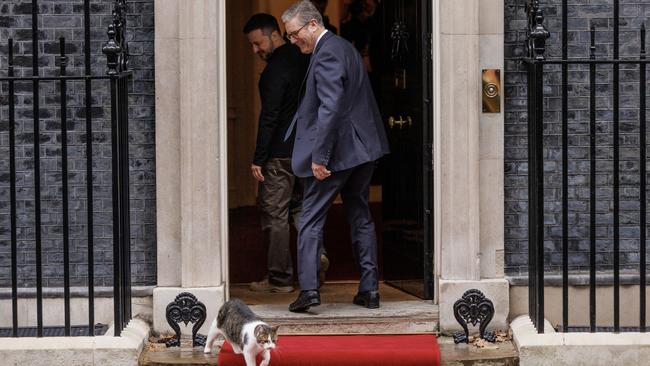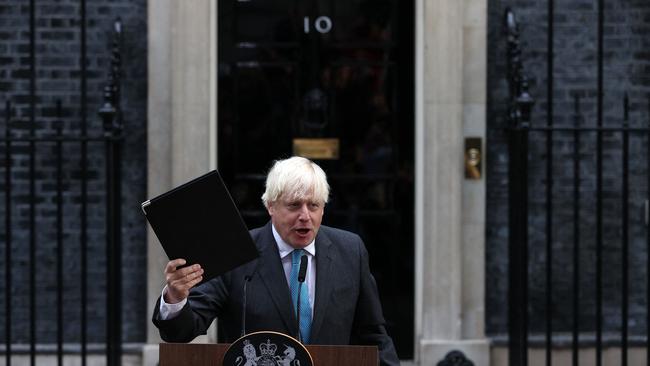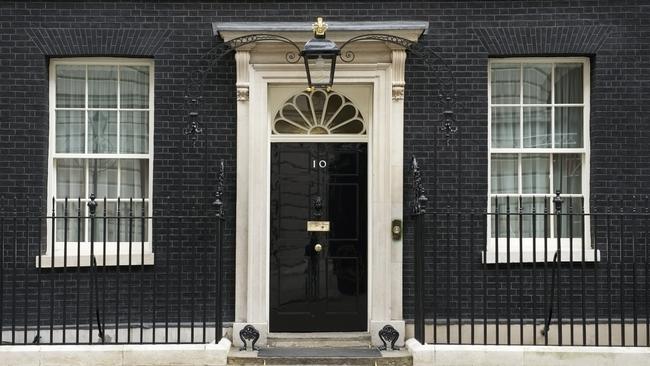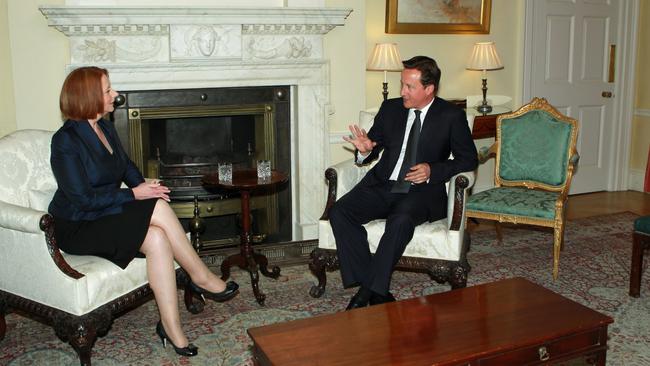Life inside ‘crack den’ at 10 Downing Street
Boris Johnson is not the only former prime minister to be appalled by the state of No.10, although one recent householder positively loved it.

To most of us, being handed the keys to a listed Georgian townhouse in the centre of London, with no mortgage repayments and a locked gate to keep strangers at bay, probably sounds like winning the lottery.
But for Boris Johnson, life in Downing Street was positively purgatorial. As he explained while promoting his memoirs last week, the flat “looked like a crack den”, which is why he and wife Carrie spent at least £110,000 ($214,000) on gold wallpaper and other lurid refurbishments.
Although only experts familiar with both crack dens and the Downing Street flat can truly judge the accuracy of this claim, the former PM is far from the first resident to give Westminster’s most celebrated address a scathing review. William Pitt the Younger thought it “awkward”, the Marquess of Salisbury called it “cramped” and Benjamin Disraeli found it “dingy and decaying”. Even on brief acquaintance, Liz Truss hated it. Downing Street, she wrote earlier this year, was a “soulless cage – with fleas”.

Can so many different occupants, living so many generations apart, all have been wrong? That seems unlikely. So what is the problem?
The answer goes back, quite literally, to the foundations. The original street, a cul-de-sac of brick terraced houses, was built in the early 1680s by George Downing, a diplomat and spy who fancied himself as a property developer. As even Downing Street’s official website admits, Downing was not a man you would choose to build your dream home. Samuel Pepys called him a “perfidious rogue”, which was putting it kindly.
Keen to cut costs, he did not use proper bricks, instead drawing lines on the mortar to create a trompe l’oeil effect, though after multiple renovations it’s unclear how much of his original ersatz brickwork remains. More importantly, his builders dug only the most rudimentary foundations for the waterlogged ground. And so, to quote another disgruntled resident, Winston Churchill, the houses were “shaky and lightly built by the profiteering contractor whose name they bear”.

Right from the start, people moaned about the building later known as No.10. One early tenant, George I’s adviser, Johann Caspar von Bothmer, reported finding it in a “ruinous condition”, which sounds very familiar. After von Bothmer’s death in 1732, George II offered it to Sir Robert Walpole, who accepted on behalf of all future first lords of the Treasury. But before he moved in, Walpole insisted on a series of renovations, including an extension to connect with a neighbouring house inhabited by one Mr Chicken. Sadly, the details of Chicken’s life are lost – but if the street was as bad as everybody claimed, he must have been relieved to get away.
Far from fixing problems with the house, Walpole’s changes seem to have made things worse. Many of his successors refused to move in, preferring their private townhouses, and in 1766 a surveyor reported that the walls adjoining the street were “much decayed” and the “floors & chimneys much sunk from the level”. What was more, the neighbourhood was in deep decline. By the early 19th century the Whitehall area was notorious for its brothels, streetwalkers and drinking dens, and most prime ministers treated the house as little more than a glorified office. The key figure in renovating Downing Street was Disraeli, who was appalled by its condition when he returned as prime minister in 1874. He demanded that the state pay for extensive renovations, including the installation of hot and cold running water, and agreed to foot the bill for the private rooms himself.
Meanwhile, his great rival William Gladstone installed electric lighting and a telephone, also spending £1555 on new furniture, the equivalent of perhaps £1m today.

Yet the enduring theme of Downing Street’s history is that no matter how much money people have thrown at the building, the general air of shabbiness and dilapidation remains. When diarist and Labour minister Richard Crossman visited Harold Wilson for dinner in 1965, he was appalled not only by the fare (“a plate with a piece of steak, two veg and a bit of cold salad” washed down with “two tins of Skol beer”) but by the dreary atmosphere. “Nothing could be more deeply petit bourgeois,” wrote this most snobbish of socialists, “than the way he lives in those crowded little servants’ quarters up there.”
In the early 1970s Edward Heath made another despairing effort to drag Downing Street into the modern world, installing old-gold carpets, silver patterned wallpaper and new brown leather chairs. But when Wilson returned a few years later, his ministers were not impressed by Heath’s handiwork. Another diarist, Barbara Castle, was particularly appalled by his “gold moire curtains of distressing vulgarity”. The whole thing looked, she thought, “like a boudoir”.
It’s tempting, I know, to turn the dilapidation of Downing Street into a metaphor for a declining nation. But since its condition was even worse during Britain’s all-conquering Georgian and Victorian heyday, that would be quite wrong.

And it is worth remembering that not all occupants moaned about it. Indeed, one recent householder positively loved it. Even during her imperial pomp, Margaret Thatcher never seemed to mind the faded gentility of life at No.10. When she first took up residence in 1979, she went through the proposed refurbishing bill with a fine-toothed comb, objecting to the costs of new linen and crockery. She paid for the redecoration of the flat, bought her own ironing board and even organised and paid for her own cleaner. And never, not once, did it occur to her to complain about her surroundings.
Welcoming writer Laurens van der Post in 1982, she sounded more like an estate agent than a stateswoman, proudly showing off the “very impressive mirrors” and “remarkable carpets”, while waxing lyrical about the “proportion” and “beauty” of the rooms so many of her predecessors had loathed.
“How much I wish,” she wrote earnestly three years later, “(that people) could share with me the feeling of Britain’s historic greatness which pervades every nook and cranny of this complicated and meandering old building.” We’ve all met estate agents who talk like that, though. So Johnson can hardly say he hadn’t been warned.
THE TIMES





To join the conversation, please log in. Don't have an account? Register
Join the conversation, you are commenting as Logout